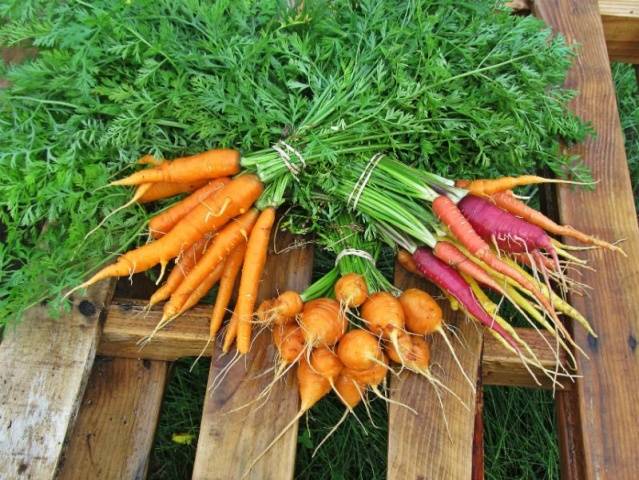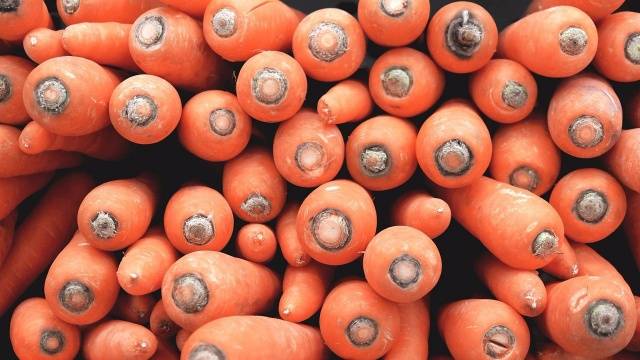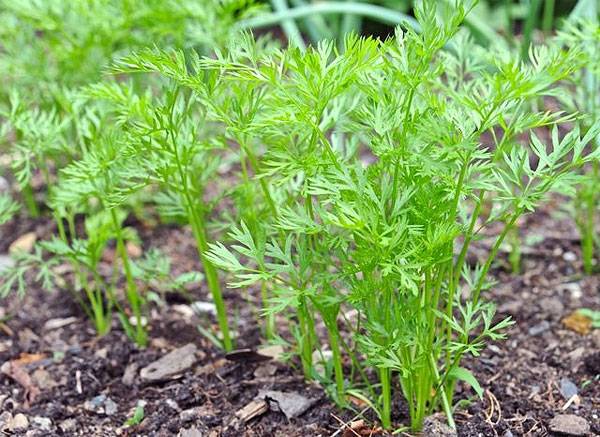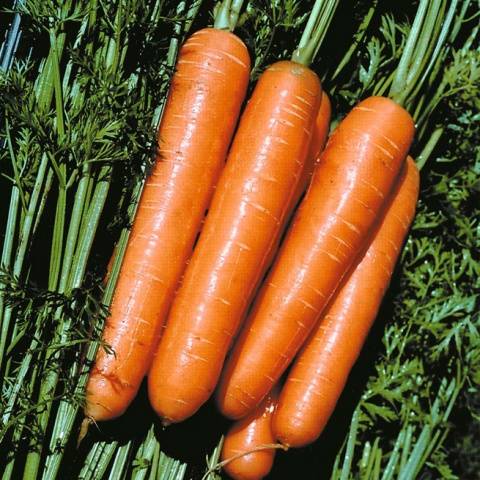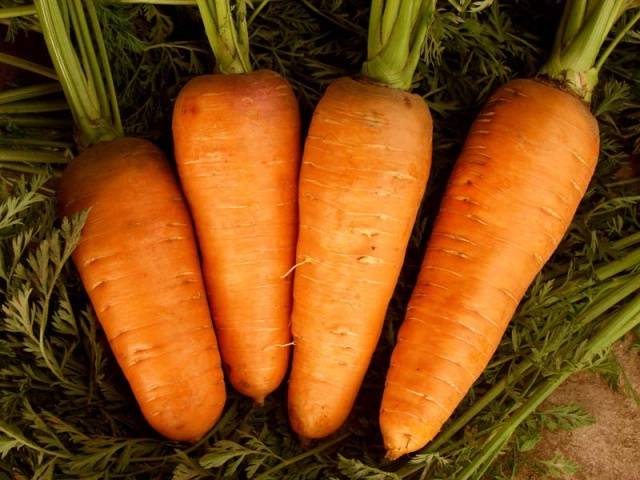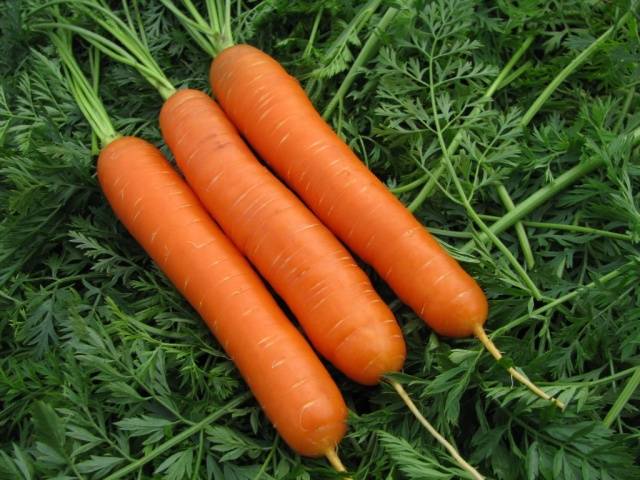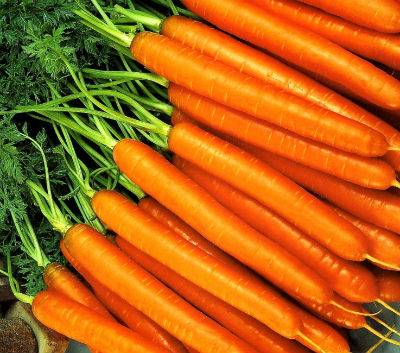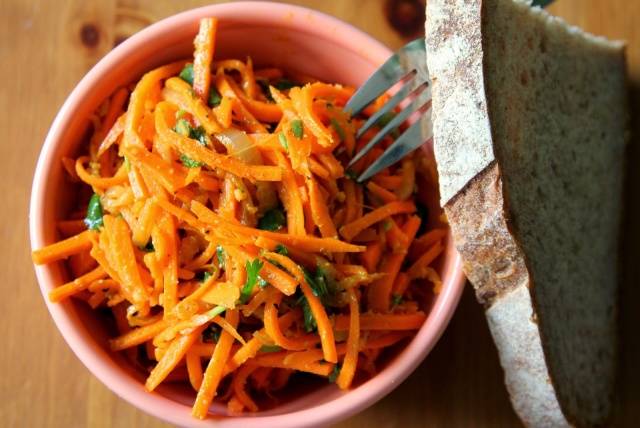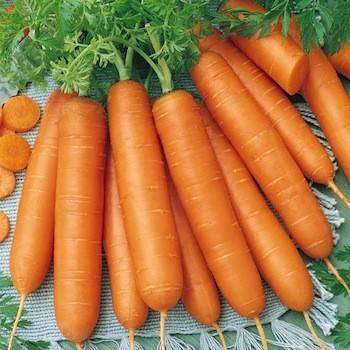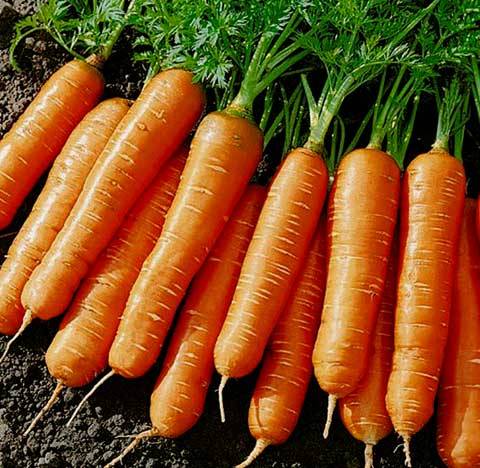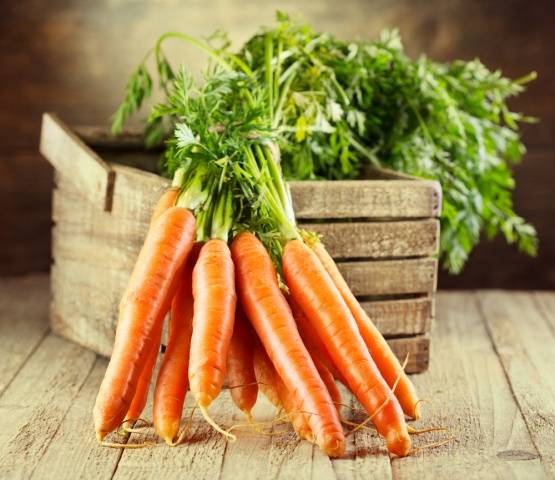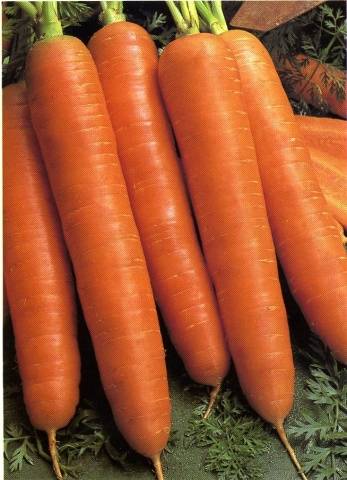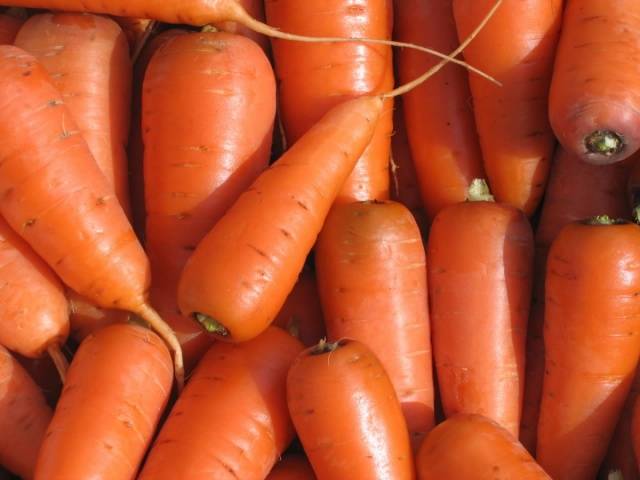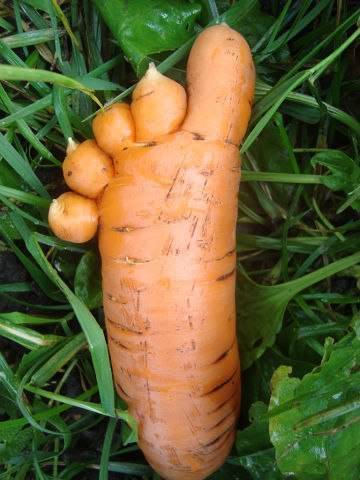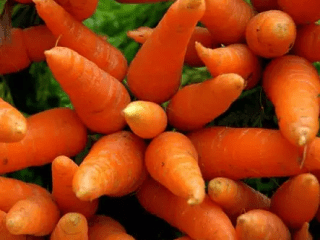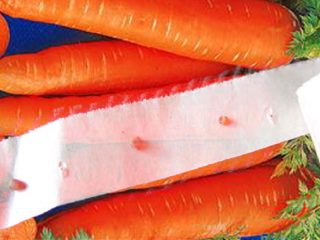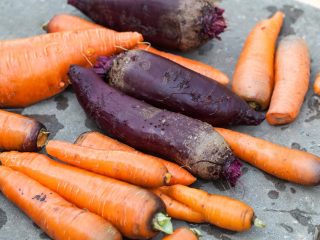Content
Both in large fields and in modest summer cottages, carrots are grown quite often. Without this vegetable, it is difficult to imagine the dishes that Russians love. Besides, carrots contain a lot of useful and unique substances, the most famous of which are carotene and vitamin A... To grow carrots, you do not need special soil, difficult care and a special climate - this culture is quite unpretentious.
You can sow carrots before winter or spring. The soil can be of any composition, the only requirement is that it must be loose. In the first 1.5 months after sowing, the culture grows slowly, the shoots are weak, so at this stage the carrots need to be protected from weeds and pests. Otherwise, the plants only need moisture - 3 months after sowing the seeds, vegetables can be harvested from the garden.
Features of zoned varieties
Each region of a huge country has its own climate. Sometimes, the climatic features of different regions are so different that one and the same crop cannot be grown there.
In this regard, breeders have long been breeding special varieties and hybrids of vegetable crops that are suitable for each specific region.
The same rule applies to carrots. There are varieties for:
- Siberia;
- The Urals;
- Moscow suburbs;
- the middle zone of Russia and the Volga region.
Carrots of the zoned variety are acclimatized to certain weather conditions: humidity, maximum and minimum temperatures, fluctuations in night and day temperatures, soil composition.
Carrots zoned for Siberia
Carrots are so unpretentious that some of their varieties can be grown even in the harsh climate of Siberia. Seeds begin to germinate at a soil temperature of about 3-5 degrees; in most northern regions, the land warms up only by the end of May - beginning of June.
Summer in Siberia is short and cool; the heat can only last a couple of months. Carrots are a vegetable with a long growing season (70 to 140 days). In order for the vegetables to have time to ripen in such a short summer, you need to choose seeds of early ripening varieties that ripen 70-100 days after sowing the seeds.
but early carrots does not differ in high taste, does not tolerate storage well. Such vegetables are more suitable for preparing fresh meals, snacks, salads. To feast on fresh carrots all winter, you must also sow the seeds of mid-season varieties. Such vegetables will retain their beautiful appearance and all the nutritional properties for a long time, will have an excellent taste and aroma.
"Losinoostrovskaya 13"
This crop belongs to the mid-season - mature vegetables can be harvested 95-100 days after sowing seeds in the beds. Root crops are cylindrical and large enough. Their mass reaches 200 grams, and the length of each fruit is 17 cm.
"Losinoostrovskaya" carrot has an excellent presentation - fruits of the same shape and weight, beautiful rich orange color.Therefore, the variety is often cultivated commercially.
The culture tastes excellent - juicy and aromatic, contains a lot of useful substances. The variety is quite fruitful: from each square meter of the garden, you can get up to 8 kg of fresh vegetables.
In order for the harvest to be high, you need to follow a few simple rules:
- seeds should be germinated a little before planting;
- plant seeds only in heated soil to a depth of about 3 cm;
- after the appearance of a couple of leaves of the plant, you need to thin out, leaving 5 cm between them;
- plants should be watered frequently (once a week) and abundantly;
- if the soil is "lean", it must be fertilized (but not with mineral fertilizers).
"Incomparable"
Another mid-early variety, the fruits of which become ripe 95-115 days after planting the seeds. The shape of the root crop is conical, the end is blunt. Carrots are painted in a red-orange uniform color. The core of the fruit is large, has a slightly lighter shade.
The fruit tastes juicy and aromatic, with a pleasant sweetish aftertaste. All root crops ripen at the same time, are considered large enough. The weight of one vegetable can range from 150 to 190 grams, and the length is often 17 cm.
The "Incomparable" variety is excellent for long-term storage - during the winter the vegetable will not lose its useful properties and taste.
To grow the variety in Siberia, it is necessary to sow seeds in mid-May, special attention will have to be paid to the thinning of plants, since this variety quickly creates powerful roots. In order for the carrot to grow normally, all weak and simply extra shoots will have to be removed, leaving at least 5 cm between the bushes.
Like all varieties, "Incomparable" loves loose, sandy soils. Requires timely watering and loosening of row spacings.
A distinctive feature of this variety is its high content of sugars and beta-carotenes, which makes it a favorite dietary product for many. From root crops, not only excellent soups and sauces are obtained, even jam is often made from them.
"Nantes"
Carrots of this variety type are known in all corners of the country - the culture takes root well in almost any weather conditions.
Ripe vegetables can be harvested as early as 100 days after sowing the seeds into the soil, which makes it possible to classify the vegetable as a medium early crop.
Root crops are colored bright orange, have a cylindrical shape with a rounded end. Each weighs about 120 grams and is about 14 cm long.
A feature of the growth of this culture is the incomplete immersion of the root crop in the ground, which is why the top of the fruit is often colored purple or green. The taste of the Nantes carrots is excellent - the fruit is juicy and aromatic. The carotene content is quite high; this vegetable is useful for people with poor eyesight.
With good care, about 6.5 kg of vegetables can be harvested from each meter of land. The fruits tolerate transportation and long-term storage well. The culture is not capricious - it can withstand strong temperature fluctuations, which makes it suitable for growing in the northern regions of the country.
"Dayana"
This mid-late variety was bred by Altai breeders, root crops ripen by the 120th day after planting the seeds.
The shape of the fruit is cylindrical, the tip is slightly pointed. The shade of the vegetable is bright orange. The mass of one carrot is about 160 grams. The root vegetables have excellent taste, the pulp is juicy and tender, the structure is homogeneous.
With good watering and frequent loosening of the soil, about 9 kg of harvest can be obtained from each square meter of the garden. You need to store the crop in a cool place, then it will last until the next season and retain all its useful qualities.
This variety is ideal for processing - carrots are often mashed and juiced.
Carrots for the Urals
We can say that all those varieties of carrots that can be grown in Siberia are excellent for the climatic features of the Urals. In the southern part of the Urals, you can even grow those carrots that are intended for central Russia - there is a fairly warm and mild climate.
But in the center and in the northern regions of the Urals, it is better to plant carrots, which are more resistant to cold and bad weather.
The disembarkation method is no different from the rest of the cases:
- the earth needs to be dug deeply in the fall;
- fertilize;
- it is better to soak the seeds for several days before planting;
- thin out plants;
- plow and water the land regularly.
"Altai shortened"
This resistant variety is suitable for growing in the climate of the Urals - the root crop ripens by the 120th day after sowing the seeds in the beds. The variety belongs to the mid-season, therefore, the roots are perfectly stored for a long period and have an excellent taste.
The shape of the vegetable is cylindrical, the average weight is 150 grams. The color of the peel and pulp is bright orange.
Altai shortened carrots are suitable for any purpose: canning, processing, fresh consumption, making salads and various dishes. This variety can be cultivated on an industrial scale - the roots are suitable for mechanized harvesting.
The culture tolerates low temperatures well, is resistant to flowering, and gives high yields with proper care.
"Nastena"
Root crops of this variety ripen already on the 80-105th day after planting in the soil. Carrots are distinguished by a very regular shape - an even and smooth cylinder with a slightly blunt tip.
The length of the root crop is 18 cm, and its weight reaches 150 grams. Both the core and the rind are colored evenly, in a rich orange hue. The pulp is juicy, tasty.
The culture is resistant to flowering, which allows you to plant seeds in the winter, respectively - to get an earlier harvest. The yield of the Nastena variety is up to 6.5 kgm². The crop is well stored without loss of taste and nutritional qualities.
In the Urals, carrots of this variety can be sown in mid-April - early May, when the temperature stabilizes. Before planting, the seeds must be soaked, it is better to use growth stimulants.
A vegetable of this variety is perfect for any purpose: it can be used to prepare dietary meals, make juices and purees for children, canning and eating fresh.
"Nevis"
Carrots of this variety are medium late, so it is better to grow them in the south of the Urals. In the northern part, root crops may not ripen before the first frost.
The shape of the root crop is a small-diameter cylinder with a slightly blunt tip. The color of the fruit is bright orange, the surface is smooth.
The length of each carrot can reach 18 cm, and the weight ranges from 110 to 170 grams. The vegetable tastes so good that it is often used fresh. However, the variety is excellent for both processing and canning.
The Nevis hybrid has a high yield - up to 9 kg. The culture is resistant to most diseases, not afraid of pest attacks. Root vegetables can be stored for a very long time - until the appearance of fresh vegetables next season.
There will be no problems with growing carrots. Seeds, most often, are granular, therefore they do not need special preparation and can be planted directly into the soil.
Carrots for the Moscow region and central Russia
It will not be difficult to choose a zoned carrot variety for central Russia with a temperate climate and peaty, loose soils. Almost all varieties of this crop are suitable for such growing conditions.
In these parts of the country, you can grow both early and mid-ripening varieties, and carrots with late ripening.
"Vitamin"
The representative of mid-ripening varieties - Vitaminnaya carrots ripens on the 110th day after planting in the soil. Root crops of this variety have the shape of a cylinder of large diameter, the tip of the carrot is rounded. The size of the fruits is medium: their weight ranges from 70 to 170 cm, and the length is often 13 cm.
Carrots are painted in a standard bright orange shade. The taste is good, full-bodied. Root vegetables contain the maximum amount of useful sugars and carotene.
The only possible problem is root cracking. The “Vitaminnaya” variety is protected from rot, flowering, stalking and other diseases. The fruits tolerate long-term storage well, retaining most of their beneficial properties. The yield of the variety is about 6 kg per square meter.
"Moscow winter"
Carrots of this variety are intended for peat soils in Moscow and the Moscow region, they also grow well in any loose soils.
The variety belongs to the medium early - the fruits ripen on the 70-90th day after sowing carrot seeds into the soil. The shape of the root is conical, the tip is slightly blunt. The color of the vegetable is bright orange. The mass of one carrot is often 150 grams and the length is 16 cm.
Culture "Moscow winter" is recommended for cultivation before winter, while the seeds must be sown to a depth of about two centimeters, and mulched on top.
Root crops tolerate storage well, can be used in any form.
How to choose the best seeds
When buying seeds of zoned carrots, you need to pay attention to the recommendations. Each package of seeds should have clear instructions for growing carrots. Most often, the seeds need to be soaked for several days for better germination. But there is granular seed material that does not require additional action on the part of the gardener - the seeds are simply sown into the ground.
With the right approach, any carrot variety will give high and stable yields.

